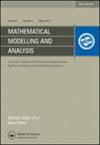Bifurcations in a Leslie-Gower Type predator-prey Model with a rational non-Monotonic Functional response
IF 1.4
3区 数学
Q1 MATHEMATICS
引用次数: 1
Abstract
A Leslie-Gower type predator-prey model including group defense formation is analyzed. This phenomenon, described by a non-monotonic function originates interesting dynamics; positiveness, boundedness, permanence of solutions, and existence of up to three positive equilibria are established. The solutions are highly sensitive to initial conditions since there exists a separatrix curve dividing their behavior. Two near trajectories can have far omega-limit sets. The weakness of a singularity is established showing two limit cycles can exist. Numerical simulations endorse the analytical outcomes.具有有理非单调泛函响应的Leslie-Gower型捕食-食饵模型的分岔
分析了包含群体防御形成的Leslie-Gower型捕食-被食饵模型。这种由非单调函数描述的现象产生了有趣的动力学;建立了该问题的正性、有界性、解的恒久性和存在三个正平衡点。由于存在一条分离矩阵曲线来划分解的行为,所以解对初始条件非常敏感。两个近轨迹可以有远极限集。建立了奇异性的弱点,表明可以存在两个极限环。数值模拟证实了分析结果。
本文章由计算机程序翻译,如有差异,请以英文原文为准。
求助全文
约1分钟内获得全文
求助全文
来源期刊
CiteScore
2.80
自引率
5.60%
发文量
28
审稿时长
4.5 months
期刊介绍:
Mathematical Modelling and Analysis publishes original research on all areas of mathematical modelling and analysis.

 求助内容:
求助内容: 应助结果提醒方式:
应助结果提醒方式:


